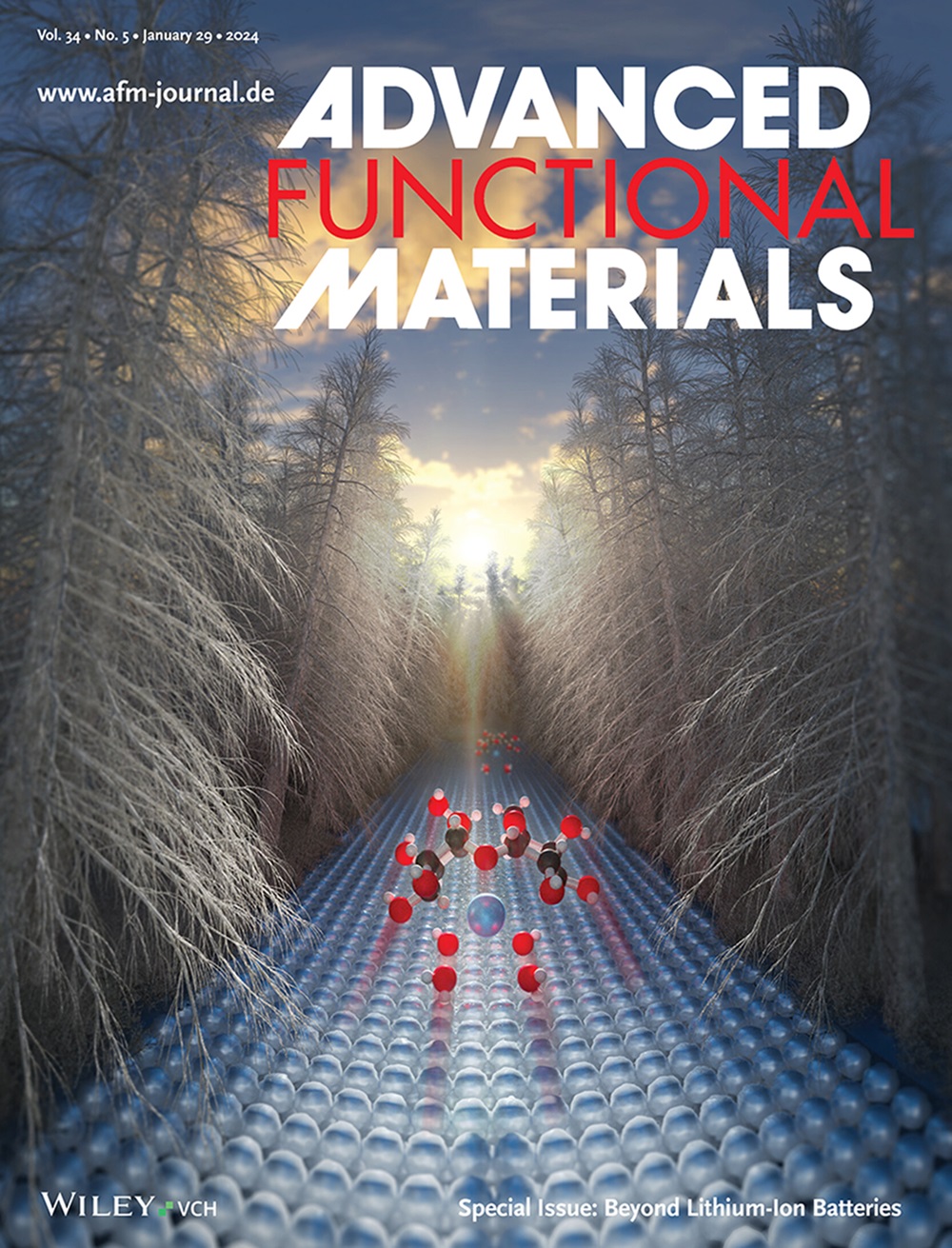多层多孔SWNTs - TPU/C - WPU复合薄膜用于水下自供电多模态触觉信息传感
IF 19
1区 材料科学
Q1 CHEMISTRY, MULTIDISCIPLINARY
引用次数: 0
摘要
在深海中,用一个传感器获取多模式的触觉信息是非常必要的,但仍然具有挑战性。本文报道了一种柔性深海触觉传感器,可以通过一次触摸同时检测物体的电导率、硬度、压力和位置。该传感器采用单壁碳纳米管掺杂热塑性聚氨酯弹性体(SWNTs - TPU薄膜),基于功函数差诱导的电子转移来区分物体的电导率。一种含有羧基官能团的多孔阴离子型脂肪族水性聚氨酯薄膜(C‐WPU)用于在压力下产生离子电流,以确定压力和位置,并识别物体的相对硬度。研究发现,金属物体产生的电流信号的大小比绝缘物体大得多。随着施加压力、压制面积和薄膜厚度的增加,信号幅度增大。此外,完全封装C - WPU薄膜并引入羧基官能团可显著提高灵敏度(最大1.2 kPa−1)。感应信号的响应时间为150 ms,恢复时间为530 ms。压力检测范围45kpa ~ 625kpa,压力检测分辨率9.2 kPa。当传感器放置在模拟水深100 m时,信号幅度仅下降10.54%。将该传感器放置在ROV(远程操作车辆)的机械手指上,成功实现了水下物体识别和硬度识别的概念验证演示。该研究为深海环境下的多模态触觉信息传感提供了一种新的解决方案。本文章由计算机程序翻译,如有差异,请以英文原文为准。
Multi‐Hierarchically Porous SWNTs‐TPU/C‐WPU Composite Film for Underwater Self‐Powered Multi‐Modal Tactile Information Sensing
Obtaining multi‐mode tactile information with one sensor in deep sea is greatly needed yet still challenging. In this paper, a flexible deep sea tactile sensor is reported, capable of detecting object's conductivity, hardness, pressing pressure and position simultaneously just by one touch. The sensor works by using single‐walled carbon nanotubes doped thermoplastic polyurethane elastomer (SWNTs‐TPU film) for differentiating object's conductivity based on the work function difference induced electron transfer. A porous anionic aliphatic waterborne polyurethane film containing carboxyl functional groups (C‐WPU) is used for generating ionic currents under pressing to determine the pressing pressure and position and recognize the relative hardness of an object. It is found that the magnitude of current signal generated by a metallic object is much larger than that of an insulative object. The signal magnitude increases with the increase in the applied pressure, the pressing area and the film thickness. Furthermore, completely encapsulating the C‐WPU film and introducing carboxylic functional groups significantly improve the sensitivity (maximum 1.2 kPa−1 ). The response time and recovery time of sensing signals are 150 and 530 ms respectively. A pressure detection range of 45–625 kPa is achieved, with a pressure detection resolution of 9.2 kPa. The signal magnitude is decreased only by 10.54% when the sensor is placed under a simulated 100 m water depth. Proof of concept demonstration of underwater object discrimination and hardness recognition with this sensor placed on a mechanical finger of a ROV (Remotely Operated Vehicle) is successfully achieved. This work provides a new solution for multi‐modal tactile information sensing in deep‐sea environment.
求助全文
通过发布文献求助,成功后即可免费获取论文全文。
去求助
来源期刊

Advanced Functional Materials
工程技术-材料科学:综合
CiteScore
29.50
自引率
4.20%
发文量
2086
审稿时长
2.1 months
期刊介绍:
Firmly established as a top-tier materials science journal, Advanced Functional Materials reports breakthrough research in all aspects of materials science, including nanotechnology, chemistry, physics, and biology every week.
Advanced Functional Materials is known for its rapid and fair peer review, quality content, and high impact, making it the first choice of the international materials science community.
 求助内容:
求助内容: 应助结果提醒方式:
应助结果提醒方式:


